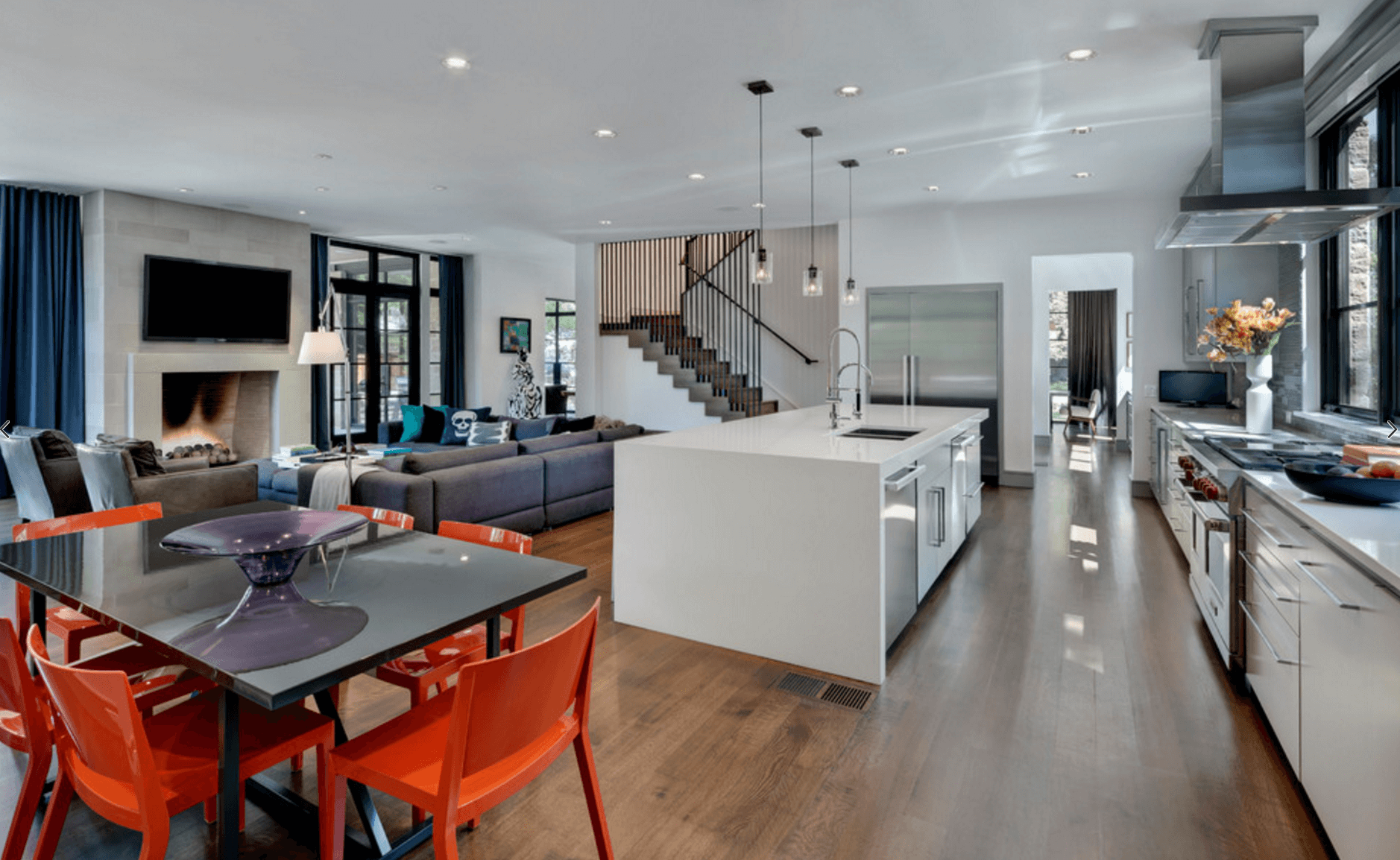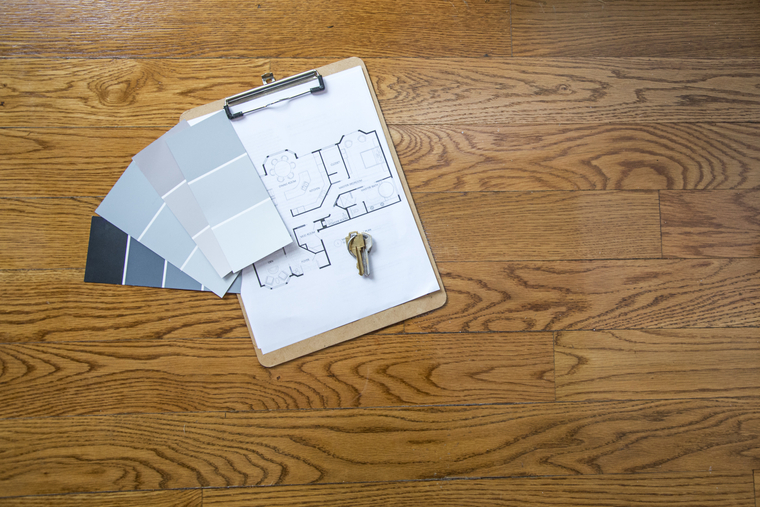Social Links Widget
Click here to edit the Social Media Links settings. This text will not be visible on the front end.
Relocating Your Home to Advance Your Career


Many of us dream of getting a better job. But when a promotion or new job opportunity comes with a request to relocate, the result can be very disruptive to your home life. There’s a lot to consider when making this kind of move, such as do you have a home to sell? Are you planning to rent or buy when you relocate? Is your employer covering some of the costs of your relocation? Should you hire a moving company or handle the move yourself? Following is an overview of some of the most important factors you should take into consideration when relocating.
Assessing the situation
The idea of moving to a new area and into a new job can be very exciting, but you’ll want to assess the situation carefully:
Do your best to make sure the job is a good fit, the boss is a good personality match (and plans to stay long-term), and that you’ll be comfortable in your new role for at least three years.
Meet with a human resources manager to make sure you understand all the details of the relocation package.
Thoroughly research your destination to ensure it’s a good fit for your entire family, and that there are other potential employers in the area in the event your new job doesn’t work out.
Use one of the online cost-of-living calculators to determine if there’s a significant difference between what you pay now (for rent/mortgage, utilities, groceries, gas, insurance, and more) and what you can expect to pay in the new location.
If your spouse works or is planning to enter the workforce, he or she should apply for jobs in the area to test the employment conditions.
Ask your real estate agent to perform a detailed market analysis to estimate the value of your current home.
If you live in an apartment, review your lease carefully to determine if you are facing any penalties for moving out.
Renting versus buying
Once you have made the decision to relocate it’s time to consider your housing options—not only where you live and what type of home you want to live in, but whether to rent or buy.
Financially speaking, it makes more sense to buy today than to rent in most markets. According to the latest research on the subject, it costs 15 percent less to own a home than to rent an apartment in the current economy. That said, renting may be a better option if:
You can’t decide where you want to live.
You don’t qualify for a home loan.
You need to keep your current home and can’t afford a second home.
You’re moving to an area where home prices are extremely high (e.g., New York City, San Francisco, Orange County).
You’re not yet certain whether you’ll want to stay long-term in the new location.
Moving your belongings
Fewer and fewer companies are offering to pay employee moving costs today, which means it may be up to you to arrange for one of the following options:
Hire out the entire process (the moving company does all the packing, loading, driving, and unloading). Expect to pay between $6,000 to $8,000, on average.
You pack all the boxes while the moving company does all the loading, driving and unloading. Expect to pay between $3,500 and $5,500, on average.
You rent a truck and do all the packing/unpacking and driving. Expect to pay between $2,000 and $3,000, on average.
Making the move easier
Relocating can be exhilarating, but also extremely stressful—especially if you have school-age children or teens. Here are four tips to make the process easier:
Get everyone in the family talking about their feelings and concerns. And make sure you’re doing as much listening as talking.
If you have children, include them in the planning and packing work to make them feel more involved. You may want to hold a going-away party for your children, to show that the move is worth celebrating.
If you have pets, ask your veterinarian, your moving company, and your airline (if you’ll be flying) to provide you with information, tips and any regulations.
To protect yourself from identity theft, only work with trustworthy moving companies; submit a change-of-address form to the post office about two weeks before your move; consider moving financial records and other personal files yourself.
Last year, the overwhelming majority of people (77 percent) who decided to move for work reported they were happy and had no regrets.
Managing Mold: How homeowners can avoid costly mold problems

 Whether you are buying or selling a home, mold has become a hot issue. Health concerns and potential damage make mold a red flag for buyers. And even if you’re not planning to sell anytime soon, taking care of mold problems now can prevent even larger problems in the future. Contrary to what some people think, mold is not a geographic problem—it can occur anywhere, no matter where you live. Here is some basic information about mold and how to deal with it.
Whether you are buying or selling a home, mold has become a hot issue. Health concerns and potential damage make mold a red flag for buyers. And even if you’re not planning to sell anytime soon, taking care of mold problems now can prevent even larger problems in the future. Contrary to what some people think, mold is not a geographic problem—it can occur anywhere, no matter where you live. Here is some basic information about mold and how to deal with it.What is mold?
Molds are microscopic organisms that are found virtually everywhere, indoors and outdoors. There are thousands of different kinds of mold. Their natural function is to help break down dead materials such as stumps and leaves so the nutrients can be used by the environment. For molds to grow, they need two things: an organic food source—such as leaves, wood, paper or dirt—and moisture.
Problems associated with mold
Mother Nature uses mold to decompose plant material. Unfortunately, when present indoors, it can be equally destructive. Mold growth can damage furnishings, such as carpets, sofas and cabinets. Left unchecked, it can also cause serious damage to walls and structural elements in your home.
Mold is present everywhere, and most people tolerate exposure with no adverse effects. If allowed to spread, however, it may cause problems. As molds grow, they release thousands of tiny spores that travel through the air. When inhaled in large enough amounts, these spores may increase the risk of adverse health effects in some people, particularly respiratory problems. A less-common strain of mold called “black mold” can be particularly troublesome to those who are especially sensitive.
Common causes of mold problems
Don’t think that just because you live in a hot, dry climate, your home is not vulnerable to mold. There are many sources of mold problems, from faulty air conditioners to poorly positioned sprinkler systems. Federal standards for energy-efficient home building have even contributed to the problems. By making homes more airtight, construction techniques in newer homes can trap moisture inside.
Here are the most common sources of mold inside the home:
- Flooding
- Leaky roofs or damaged gutters
- Heating or cooling system problems
- Poor drainage next to foundation
- Plumbing leaks from toilets, refrigerators and dishwashers
- Damp basement or crawl space
- Leaking windows or doors
- Steam from shower or cooking
- Indoor exhaust from clothes dryer
What to look for
If you can see or smell mold inside your home, it’s time to take measures. Any area that has sustained past or ongoing water damage should be thoroughly inspected—you may find hidden mold growth in water-damaged walls, floors or ceilings. Walls and floors that are warping or discolored can also indicated moisture problems, as can condensation on windows or walls.
Preventing mold in your home
Since mold is always present, there’ no way to eliminate it completely. You can control indoor mold growth, however, by controlling moisture.
- Remove the source of moisture by fixing any leaks or other water problems.
- Make sure bathroom fans and dryers are properly vented to the outside. Always use the exhaust fan when cooking or showering.
- Use a dehumidifier or air-conditioning system. Make sure your AC system is well maintained and is the correct size for your home. A faulty AC system can cool the air without removing the water vapor, creating high humidity.
- Insulate your home well to prevent indoor condensation.
- Have your heating, ventilation and cooling systems professionally cleaned annually. Air-duct systems can easily become contaminated with mold.
- Regularly clean moist area such as the bathroom with products that treat mildew.
- Dry-clean, rather than wet-clean, your carpets.
- Avoid carpeting bathrooms and basements.
- Clean any moldy surfaces as soon as you notice them.
Mold clean-up
Mold is a manageable problem. Unless it is dealt with correctly, however, it will continue to come back. If your mold problem is severe or if you have extensive water damage, it’s best to call an experienced, professional contractor who specializes in mold removal. If you have a mold problem that is isolated to a small area, less than a square yard or so, you can try to resolve it yourself.
Porous items that are hard to clean, such as carpet and drapes, should be discarded. Moldy sheetrock and ceiling tiles can be removed and replaced.
Hard, nonabsorbent surfaces such as glass, plastic and metal can be thoroughly cleaned with soap and water. Allow to dry completely.
For solid items that are semi-porous, such as floors, cabinets and wood furniture, scrub with an ammonia-free cleaner and hot water to remove all mold. Rinse with water and dry thoroughly. After cleaning, apply a mildewcide to kill mold and spores.
When cleaning mold, remember to wear gloves, a mask and eye protection, and work in a well-ventilated area. Never mix cleaner containing bleach and ammonia; this can result in the release of a toxic gas. And be sure to throw away any sponges or rags that you use for cleaning.
For more information on Windermere Evergreen please contact us here.
How to Hire a Home Inspector

 Is this year you make the leap to buy your first home?
Is this year you make the leap to buy your first home?
A home is a major investment and, for many people, the greatest financial asset they have. With so much at stake, it makes sense to do what you can to protect your financial interest. Getting a home inspection is a smart, simple way to do just that.
When you make a written offer on a home, insist that the offer provide that your contract is contingent on a home inspection conducted by a qualified inspector. You’ll have to pay for the inspection yourself, but an investment of a few hundred dollars could save you thousands of dollars and years of headaches. If you’re satisfied with the results of the inspection and are assured that the home you’re purchasing is in good shape, you can proceed with your transaction, confident that you are making a smart purchase.
Hire a professional
When you are ready to hire a home inspector, be sure they’re licensed in your state. They should be able to provide you with their license number, which you can use to verify their status with the appropriate government agency. The best way to find an inspector is to ask your real estate agent for a recommendation. Even among licensed and qualified home inspectors, there can be a difference in knowledge, performance, and communication skills, so it’s a good idea to do some research to ensure that you get the type of inspection you need.
What to ask your home inspector
Ask the right questions to make sure you are hiring the right professional for the job.
What does your inspection cover?
Insist that you get this information in writing. Then make sure that it’s in compliance with state requirements and includes the items you want inspected.
How long have you been in the business?
Ask for referrals, especially with newer inspectors.
Are you experienced in residential inspections?
Residential inspection in a unique discipline with specific challenges, so it’s important to make sure the inspector is experienced in this area.
Do you make repairs or make improvements based on inspection?
Some states and/or professional associations allow the inspector to perform repair work on problems uncovered in an inspection. If you’re considering engaging your inspector to do repairs, be sure to get referrals.
How long will the inspection take?
A typical single-family dwelling takes two to three hours.
How much will it cost?
Costs can vary depending upon a variety of things, such as the square footage, age, and foundation of the house.
What type of report will you provide and when will I get it?
Ask to see samples to make sure you understand his or her reporting style. Also make sure the timeline works for you.
Can I be there for the inspection?
This could be a valuable learning opportunity. If your inspector refuses, this should raise a red flag.
Are you a member of a professional home inspector association? What other credentials do you hold?
Ask to see their membership ID; it provides some assurance.
Do you keep your skills up to date through continuing education?
An inspector’s interest in continuing education shows a genuine commitment to performing at the highest level. It’s especially important with older homes or homes with unique elements.
What doesn’t a home inspection cover?
For a variety of reasons, some homes will require specialty inspections that are not covered by a typical home inspection. A specialty inspection might include such items as your home’s sewer scope, septic system, geotechnical conditions (for homes perched on steep slopes or where there are concerns regarding soil stability) or underground oil storage tank. If you have any questions about whether or not your home needs a specialty inspection, talk to your real estate agent.
Design Trends That Sell New Homes


The highlight of the breakfast was a presentation by the Macadam Floor and Design Center. Located in Kirkland, Washington, they specialize in providing flooring and interior design materials, as well as installation, design, and project management assistance to the construction industry and other professionals. They walked the group through the five reasons buyers are drawn to new construction homes.
1. Modern features.
2. Customization opportunities.
3. Less maintenance and repairs.
4. Being the first to live in the home.
5. Getting to live in a newly developed neighborhood.
So, what’s new in the design trend sphere? Right now it’s all about texture and simplifying. Say goodbye to bold, busy styles and trade them in for the natural, classy look with muted tones. Your color pallet should be moving away from the golden beige and heading towards the warm grey (and pastels).
Here are some key trends to follow:
Wallpaper – We know what you’re thinking, wallpaper is so 80s, right? Actually, wallpaper today is much more sophisticated and can add texture to highlight walls, powder rooms, or dining rooms. Wherever you decide to put it, make sure it fits the ambiance of the room.
Counter Tops – Whether it’s in your kitchen or master bathroom, white is all the rage right now. Here’s a tip we picked up: you might love the look of marble, but it’s not very practical because it’s susceptible to staining, scratching, and etching. Quartz allows for the same chic look that marble has without all the hassle. Want to be über modern? Invest in a waterfall kitchen island where the counter top comes down on both sides to meet the floor.
Architecture Elements – Open concept floor plans are opening up even more if you can believe it. People are shedding their walls and opting for rooms that are defined by posts, adding bigger kitchens and living spaces, and even floating stairs. Some even refer to them as “super rooms” because these spaces are so multi-purpose. This will make your home feel less cramped and fresher. Curl up to a full-height fireplace for added effect.
Tile – Think big. In fact, the bigger the tiles, the better. Format tiles, which are as large as 24 by 48 inches, are a popular choice for bathroom floors, as are wood plank tiles. Subway, glass, and metallic tile looks are also “in” in all styles of homes.
Mud Rooms – These “throw back” multi-use rooms are gaining more and more momentum in modern day homes. Since they serve as a point of entry, you can count on guests seeing them, so “snazzy” is how they should be described rather than “drop and go.” There is a high demand for ones that also include a washer/dryer and extra storage.
According to the experts from Macadam Floor and Design Center, when people aren’t building their homes from the ground up, they are upgrading. The average amount that people tend to spend on an upgraded room is $20,000 – although that varies greatly depending on the room and budget. Relatively simple things, like adding a wine room in the cellar, a “Wok” kitchen, or a stand-alone bathtub in the master suite are great ways to keep your house up to date. What’s next for you?
For more information on Windermere Evergreen contact us here.
Buying your home: A step-by-step approach


There is a lot to consider when you decide to buy a home, especially if it is your first. How much home you can afford? What kind of loan should you choose? Which neighborhoods are both affordable and a good investment? These are just a few of the questions you’ll be asking yourself. But with an experienced agent to help you, you’ll get the guidance you need to come up with the right answers−and a home you love.
First things first
Before you start shopping, you need to find out how much home you can afford to buy. Your agent can refer you to a loan officer who will help you determine how much of a down payment you can manage, as well as the monthly payment, taxes and insurance costs. Your lender can then prequalify you for a dollar amount, which can help you focus your search. You can also get a quick, rough estimate of monthly mortgage costs at Windermere.com; there’s a mortgage rate calculator on every listing detail page.
Create a wish list
Once you know your price range, talk to your agent about the home features you need and the ones you would prefer. The former might include number of bedrooms or suitable space for a home office, while the latter might include hardwood floors or a pantry. By clearly communicating your needs and preferences, you can help you agent narrow down the selection and avoid wasting your time.
Check out a few neighborhoods
Be sure to talk to your agent about what you’re looking for in a neighborhood. Are property values your highest priority? Great schools? A short commute? Small-town atmosphere? Big-city amenities? Your agent will try to narrow down the affordable neighborhoods that fit your criteria. Then you can either explore them with your agent or get a sense of each neighborhood on your own.
Shop for a loan
There are many different loan programs to choose from. You’ll want to find one that offers you the best terms for your current situation and future plans. Your agent can give you the names of several mortgage specialists who can review your options with you and help you determine which loan is the most advantageous. Once you’re approved for a loan, sellers will consider you a more attractive prospective buyer.
Make an offer
You’ve finally found the right house in the right neighborhood. It fits your practical needs, has potential and just feels right. So how do you ensure that you keep the price as affordable as possible without running the risk of losing it? Your agent has the expertise to help you make the right offer. He or she knows what comparable houses are selling for, how long they’ve been on the market, and whether or not the asking price for the home you want is fair. Your agent can also offer excellent advice when it comes to making a counteroffer.
Seal the deal
Once you’ve found the home you want and your offer has been accepted, you give the seller an earnest-money deposit. Your agent draws up a purchase and sale agreement; it’s the contract that outlines the details of the property transfer from the seller to you. This contract is typically contingent on the home passing a structural inspection and you obtaining approval for financing.
The inspection lets you know if the house has any major issues and how well it has been maintained. Remember, no house is perfect. If the inspection uncovers some problems, your agent can help you determine whether to ask the seller to handle or pay for the repairs or to renegotiate the price of the home.
When the inspection is concluded and any loose ends resolved, you “close” on the home. Closing is when you and the seller sign all the papers, you pay your share of the settlement fees, and the documents are recorded. Your agent will be a happy to answer any questions throughout this complex process.
Home at last
When you buy a home, you get more than just a place to live. You get the satisfaction of having a place that is truly yours, one that reflects your style and provides a comfortable setting for you and your family. Buying a home also gives you a substantial annual tax deduction and a way to build wealth over the years.
If you have questions about the buying or selling process, or are looking for an agent in your area, we have professionals that can help you. Contact us here.
The Birdies – And Bogeys – Of Buying A Golf Course Home

 Living on a golf course has obvious appeal to anyone who enjoys teeing up on a regular basis. In addition to having your next round of golf right outside your door, living on a golf course often affords you a view of a sprawling green vista. Many golf communities also feature newer homes and offer extra amenities such as spas, planned activities and more.
Living on a golf course has obvious appeal to anyone who enjoys teeing up on a regular basis. In addition to having your next round of golf right outside your door, living on a golf course often affords you a view of a sprawling green vista. Many golf communities also feature newer homes and offer extra amenities such as spas, planned activities and more.Yet for all their upsides, there are aspects of living on a golf course that might give you pause. They include:
Stray golf balls: The possibility of an airborne golf ball landing on you, your car or your home is a definite possibility when you’re living on a golf course. If you’re especially concerned about this, search for a home further away from the fairways. Also make sure you have the right insurance in place.
Noise from golf carts: You’ll want to check where the path for golf carts runs. If you’re close to a path, you’ll likely be subject to the noise of carts and people zipping by for a good part of each day.
Noise from the golf course: Things can get noisy if you’re very close to the course. This is especially true if your house borders a tee box. Another thing to consider is noise from groundkeepers. Courses are typically mowed very early in the morning. If your master bedroom faces out to the course, it’s likely your sleep could be interrupted by noise and headlights.
Deed restrictions: It’s common for golf communities to be regulated by a homeowners’ association in addition to having recorded CC&R’s that were designated upon the development of the community. A thorough review of the HOA Bylaws and the CC&R’s is very important. If the either set of regulations will seriously hinder your quiet enjoyment of your own home, or place too much demand/control on structural improvements, paint colors, yard maintenance, etc. then you may want to just stick with your membership and live elsewhere.
For more information on Windermere Evergreen please contact us here.
Childproofing: Protect Your Family and Your Home from Potential Hazards

 When you think of your home, it likely conjures up feelings of safety, shelter, and comfort. However, accidental injuries in the home are one of the leading causes of harm to children 14 and younger. By taking certain precautions, many of these accidents can be prevented.
When you think of your home, it likely conjures up feelings of safety, shelter, and comfort. However, accidental injuries in the home are one of the leading causes of harm to children 14 and younger. By taking certain precautions, many of these accidents can be prevented.While supervision is the best way to keep your children safe at home, you can’t watch them every second. Childproofing, to whatever degree you are comfortable, will go a long way toward keeping your littlest loved ones safe and healthy at home.
Here are some tips to get you started.
Many accidents happen with or around water.
If you have children at home, it’s advisable to adjust your water heater to no higher than 120 degrees to prevent scalding. Furthermore, you should never leave a small child unattended in a bath tub, even for a few seconds. And be sure to safely secure doors that lead to swimming pools and hot tubs, including pet doors. When cooking or boiling water, turn pot handles in, or better yet use the back burners, to prevent little hands from pulling them off the stove.
Household chemicals can be very harmful to children.
It’s important not to keep poisonous materials under the sink, even if you have a cabinet guard in place. Keep dangerous chemicals up high and in a room that isn’t accessible to your little ones. Seemingly innocuous medicines can also be dangerous. Make sure your medicine cabinet is out of sight, mind, and reach.
Use safety latches and gates.
It’s advisable that you use safety latches on drawers, cabinets, toilets, and windows, as well as place covers on all electrical outlets. Gate off stairways and entrances to rooms, such as garages, that contain dangerous or fragile objects.
Secure furniture and other objects.
Heavy furniture, electronics, and lamps must be secured to prevent a child from pulling them over. Bookshelves and entertainment centers often come with devices that attach them to walls so that a climbing child won’t topple the furniture. The end-caps on door stoppers can be a choking hazard, so it’s advisable to remove them. Place plastic bumpers on sharp corners or edges of coffee tables, entertainment centers, and other furniture to prevent cuts and bruises.
Install a carbon monoxide detector.
The U.S. Consumer Product Safety Commission (CPSC) recommends that consumers purchase and install carbon monoxide detectors in addition to smoke alarms. Be sure to test both devices regularly and replace batteries as needed. The American Red Cross advises families to learn first aid and CPR, and to devise an emergency evacuation plan for fires and earthquakes.
Emergency contact info.
Last, but not least, in case an emergency does happen, always keep numbers for your child’s doctor, your work and cell, and other emergency contact info in an easily found place, preferably near the phone.
Accidents can and will happen, but by following a few small steps you can have peace of mind knowing that you’ve done everything you can to protect your family from harm in your home.
For more information on Windermere Evergreen please contact us here.
Planning for the Future: Housing Options to Consider


It should come as no surprise that 75% of the senior citizens polled in the latest AARP Preferences survey strongly agreed with the statement, “What I’d like to do is stay in my current residence as long as possible.” After all, home is where the heart is; and the longer you live in a place, the stronger your attachment to it becomes.
But it’s important for those over 50 to assess potential lifestyle modifications that may be necessary down the road well in advance, because many will require significant research and preparation.
Whether you are planning for your own future or that of a loved one, analyzing new housing options before a change becomes necessary will help ensure you have the greatest number of options with the least amount of stress. Here are some considerations to help guide you or your loved one through the process.
Location and size
In planning for the future, communication with all involved parties is key to understanding where you or the senior in your life wants to be. Many seniors want to be close to family and friends. Proximity or access to basic needs is also a critical consideration, especially for those who no longer drive.
Once an area is chosen, think about how much space is needed. Most seniors choose to downsize to a smaller home, and here are many advantages to this. A smaller home generally means less maintenance, lower mortgage or rental costs, and lower taxes. Less space can also be easier to manage. Single-level homes are a good option for those with decreased mobility and can help reduce the likelihood of falls and injuries. You’ll also want to consider whether a yard is needed, and whether you’d need someone else to maintain it.
Multi-family home
Multi-family homes, such as condominiums, cooperatives and townhomes, are well-suited for senior living, offering many options for budgets, maintenance and amenities. But most people don’t fully understand the differences between them.
Condominiums and cooperatives offer benefits of homeownership, but allow for certain expenses to be shared by all owners. Other benefits include security, shared building insurance and possible onsite amenities. Monthly fees are collected in both condominiums and cooperatives to maintain the property and any amenities, and both have elected boards of representatives who meet regularly to review operating expenses and building issues. Condominium ownership is based only on the unit, with taxes paid by the owner. In cooperatives, owners are shareholders, giving them sole rights and equity of their unit, but property taxes are shared by the building and included in your monthly fees.
Townhomes, on the other hand, allow for ownership of the structure and the land it sits on (front and back yards). Most are designed as row-houses, with one or two common walls. For those who prefer the legal rights of single-family ownership and do not want to pay monthly dues and do not want to pay monthly dues, a townhome may be the best option.
Drawbacks of multi-family homes can include noise from shared walls or floors, homeowner’s associations, monthly fees and CC&Rs (covenants, conditions and restrictions).
Renting
Renting can be a good way to avoid home ownership costs and maintenance. It may also be a more affordable way to live in a desirable area. Cons of renting can include noise through shared walls, the potential for your rent to increase over time, difficult or unreliable landlords, inattention to maintenance issues, and the possibility that you may need to move if the property is sold. It’s a good idea to talk to one or more current tenants of the rental to find out what their experience has been with the property and the landlord.
Alternative senior living options: independent and assisted
Another solution to consider for yourself or your family member is independent living communities (also called senior apartments, retirement communities, retirement communities, retirement homes and senior housing). Independent living communities provide privacy, independence, and the opportunity to connect with others without the demands of homeownership. They are usually full-service, offering meals, housekeeping, transportation and social activities.
For those who struggle with day-to-day living responsibilities, it may be time to consider assisted living arrangements. Some options include Adult Day Care, Elder Cottage Housing Opportunities (ECHO), Group Home, Special Care Unit (SCU) or Nursing Homes. Your state human resources department can usually provide more information about these options in your community and offer help with referrals, or you can opt for private referral services.
Financial factors
The costs for alternative housing can add up quickly—especially as the need for assistance increases. Medicare, unfortunately, does not pay for housing; but under strict financial restrictions, Medicaid may. To get a better feel for just how much these living arrangements can cost, visit GenWorth.com and search the cost of long term care where you live.
If the choice is made not to move, you could consider a reverse mortgage. This allows homeowners over the age of 65 to tap into their home equity in lieu of a monthly payment, with no repayment necessary as long as the property is their principal residence and they meet all the terms of the agreement. Keep in mind, however, that if the owner sells the home, dies, or does not meet the terms of the agreement, they or their family will be required to pay the remaining balance of the loan.
Some states offer assistance with property tax, or special assessments for seniors based on age, disability and household income. Check with your State Department of Revenue to see what options exist in your state and whether you qualify. Long-term care insurance is another option. An LTC policy will help pay for the costs not covered by traditional health insurance or Medicare (which can include assistance with daily-living activities, as well as the care provided in a variety of living/care facilities).
For more help and information
Your Windermere Real Estate agent can help you make the transition when the time is right by assessing the local property market, helping you properly price homes for sale, and finding a new home that best meets the unique needs of you or your loved ones.
Why So Many Americans Are Either Upsizing or Downsizing

 According to two recent surveys that took industry watchers by surprise, many family homeowners are putting frugality aside and upsizing to new houses that average as large as 2,480 square feet (an increase of as much as 13 percent from the year before), and sometimes exceed 3,500 square feet in size.Meanwhile, millions of baby boomer homeowners are rushing to downsize—with some 40 percent of Americans between the ages of 50 and 64 saying they’re planning to make a move within the next five years.
According to two recent surveys that took industry watchers by surprise, many family homeowners are putting frugality aside and upsizing to new houses that average as large as 2,480 square feet (an increase of as much as 13 percent from the year before), and sometimes exceed 3,500 square feet in size.Meanwhile, millions of baby boomer homeowners are rushing to downsize—with some 40 percent of Americans between the ages of 50 and 64 saying they’re planning to make a move within the next five years.It’s a tale of two very different segments of the population making dramatic shifts in their living accommodations to find the housing solutions that best suit their needs: one upsizing while the other downsizes.
With so many baby boomers now nearing retirement age (8,000 Americans turn 65 every day), it should come as no surprise that the number of prospective “downsizers” exceed the number of “upsizers” by three to one. With their children gone, these aging homeowners are interested in reducing the amount of house they need to care for, and are eager to bulk up their retirement savings with any home-sale profits.
As for why many families are choosing to upsize so substantially after years of downsizing or staying put, experts point to the extremely low interest rates and discounted home prices available today, and theorize that many families now feel confident enough about the economy to move out of homes they outgrew years ago.
If you’re considering upsizing or downsizing, here are some facts to consider:
How such a move can impact your life
The most common benefits of downsizing:
- Lower mortgage payments
- Lower tax bills
- Lower utility bills
- Less maintenance (and lower maintenance expenses)
- More time/money for travel, hobbies, etc.
- More money to put toward retirement, debts, etc. (the profits from selling your current home)
The most common benefits of upsizing
- More living space
- More storage space
- More yard/garden space
- More room for entertaining/hosting friends and family
Negative impacts:
- Upsizing will likely increase your living expenses, so it’s important to factor into any financial forecasts
- Downsizing will require that you make some hard choices about what belongings will need to be stored or sold
Other impacts to consider:
- The loss of good neighbors
- Lifestyle changes (walking, neighborhood shopping, etc.)
- The effect on your work commute
- Public transit options
Buy first, or sell first?
Homeowners considering this transition almost always have the same initial question: “Should I buy the new home now, or wait and sell my current place first?” The answer is dependent on your personal circumstances. However, experts generally recommend selling first.
Selling your current home before buying a new one could mean you have to move to temporary quarters for some period of time—or rush to buy a new home. That could prove stressful and upsetting. However, if you instead buy first, you could be stuck with two mortgages, plus double property tax and insurance payments, which could quickly add up to lasting financial troubles.
If you need to sell in order to qualify for a loan, there’s no choice: You’ll have to sell first.
Another option:
You could make the purchase of the new house contingent on selling your current home. However, this approach can put you in a weak bargaining position with the seller (if you can even find a seller willing to seriously consider a contingency offer). Plus, you may be forced to accept a low-ball offer for your current house in order to sell it in time to meet the contingency agreement timing.
The truth is, most home sales tend to take longer than the owners imagine, so it’s almost always best to finalize the sale, and do whatever is necessary to reap the biggest profit, before embarking on the purchase of your new home.
When to make the transition
Ideally, when you’re selling your home, you want to wait until the demand from potential buyers is high (to maximize your selling price). But in this case, because you’re also buying, you’ll also want to take advantage of any discounted interest rates and reduced home prices (both of which will fade away as the demand for homes grows).
How will you know when the timing is right to both sell and buy? Ask an industry expert: your real estate agent. As someone who has their finger on the pulse of the housing market every day, they can help you evaluate the current market and try to predict what changes could be coming in the near future.
Even if you’ve been through it before, the act of upsizing or downsizing can be complex. For tips, as well as answers to any questions, contact a Windermere agent any time.
Should I Move or Remodel?


There are a number of things that can trigger the decision to remodel or move to a new home. Perhaps you have outgrown your current space, you might be tired of struggling with ancient plumbing or wiring systems, or maybe your home just feels out of date. The question is: Should you stay or should you go? Choosing whether to remodel or move involves looking at a number of factors. Here are some things to consider when making your decision.
Five reasons to move:
1. Your current location just isn’t working.
Unruly neighbors, a miserable commute, or a less-than-desirable school district—these are factors you cannot change. If your current location is detracting from your overall quality of life, it’s time to consider moving. If you’re just ready for a change, that’s a good reason, too. Some people are simply tired of their old homes and want to move on.
2. Your home is already one of the nicest in the neighborhood.
Regardless of the improvements you might make, location largely limits the amount of money you can get for your home when you sell. A general rule of thumb for remodeling is to make sure that you don’t over-improve your home for the neighborhood. If your property is already the most valuable house on the block, additional upgrades usually won’t pay off in return on investment at selling time.
3. There is a good chance you will move soon anyway.
If your likelihood of moving in the next two years is high, remodeling probably isn’t your best choice. There’s no reason to go through the hassle and expense of remodeling and not be able to enjoy it. It may be better to move now to get the house you want.
4. You need to make too many improvements to meet your needs.
This is particularly an issue with growing families. What was cozy for a young couple may be totally inadequate when you add small children. Increasing the space to make your home workable may cost more than moving to another house. In addition, lot size, building codes, and neighborhood covenants may restrict what you can do. Once you’ve outlined the remodeling upgrades that you’d like, a real estate agent can help you determine what kind of home you could buy for the same investment.
5. You don’t like remodeling.
Remodeling is disruptive. It may be the inconvenience of loosing the use of a bathroom for a week, or it can mean moving out altogether for a couple of months. Remodeling also requires making a lot of decisions. You have to be able to visualize new walls and floor plans, decide how large you want windows to be, and where to situate doors. Then there is choosing from hundreds of flooring, countertop, and fixture options. Some people love this. If you’re not one of them, it is probably easier to buy a house that has the features you want already in place.
Five reasons to remodel:
1. You love your neighborhood.
You can walk to the park, you have lots of close friends nearby, and the guy at the espresso stand knows you by name. There are features of a neighborhood, whether it’s tree-lined streets or annual community celebrations, that you just can’t re-create somewhere else. If you love where you live, that’s a good reason to stay.
2. You like your current home’s floor plan.
The general layout of your home either works for you or it doesn’t. If you enjoy the configuration and overall feeling of your current home, there’s a good chance it can be turned into a dream home. The combination of special features you really value, such as morning sun or a special view, may be hard to replicate in a new home.
3. You’ve got a great yard.
Yards in older neighborhoods often have features you cannot find in newer developments, including large lots, mature trees, and established landscaping. Even if you find a new home with a large lot, it takes considerable time and expense to create a fully landscaped yard.
4. You can get exactly the home you want.
Remodeling allows you to create a home tailored exactly to your lifestyle. You have control over the look and feel of everything, from the color of the walls to the finish on the cabinets. Consider also that most people who buy a new home spend up to 30 percent of the value of their new house fixing it up the way they want.
5. It may make better financial sense.
In some cases, remodeling might be cheaper than selling. A contractor can give you an estimate of what it would cost to make the improvements you’re considering. A real estate agent can give you prices of comparable homes with those same features. But remember that while remodeling projects add to the value of your home, most don’t fully recover their costs when you sell.
Remodel or move checklist:
Here are some questions to ask when deciding whether to move or remodel.
1. How much money can you afford to spend?
2. How long do you plan to live in your current home?
3. How do you feel about your current location?
4. Do you like the general floor plan of your current house?
5. Will the remodeling you’re considering offer a good return on investment?
6. Can you get more house for the money in another location that you like?
7. Are you willing to live in your house during a remodeling project?
8. If not, do you have the resources to live elsewhere while you’re remodeling?
If you have questions about whether remodeling or selling is a wise investment, or are looking for an agent in your area, we have professionals that can help you. Contact us here.
 Facebook
Facebook
 X
X
 Pinterest
Pinterest
 Copy Link
Copy Link